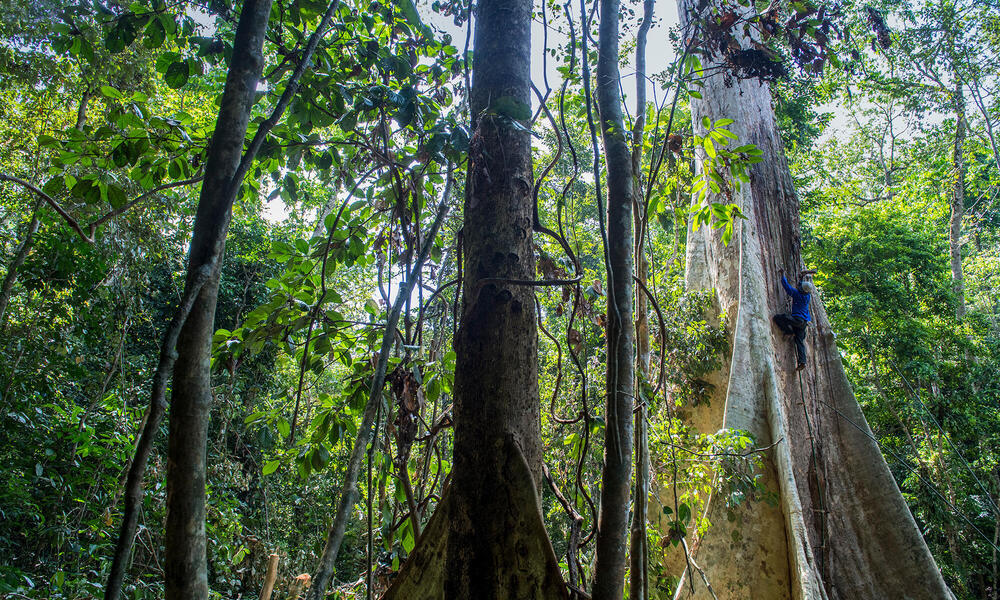Conde Nast’s Dawn Ostroff on Turning Magazine Articles into Movies and New TV Shows – The Hollywood Reporter

In 2011, Dawn Ostroffwho had been president of The CW, entered what she calls “a slightly dysfunctional universe” when the publisher Conde Nast commissioned it to operate its 19 magazine brands, including vogue, the new yorker and vanity loungeand a treasure trove of 100,000 items dating back decades – across film, TV and digital under the banner of Conde Wicked entertainment. “We couldn’t use much of the existing infrastructure because the print side was so different,” she says.
Whereas from Ostroff background is on television, six years later, CNE found more traction in digital video and film. He has 35 films in development with stars like Alexander Payne (The will of the judge) and Frank Marshall (The longest night). And on October 20, Sony will open its first big movie, the $38 million firefighter drama. Only the braveon the basis of a QG reporting on a tragic 2013 inferno in Arizona that killed 19 firefighters. Unlike the magazine’s previous on-screen hits like Argo and Brokeback Mountain, Conde Nast is a for-profit participant.
Conde Nast parent Advance Publications has invested over $50 million in CNEwhich has 313 employees in New York and Los Angeles, and the label finally made a seven-figure profit in 2016, a year earlier than expected, mainly thanks to advertising revenue from the billion monthly views of CNE 5,000 digital videos, including Emmy nominations Fuck you cancer and Oscar nominee Joe’s fiddle.
Ostroffmarried with two children and two stepchildren, invited THR to his office at One World Trade Center to talk about what’s next for CNE.
Part of your original mandate was to operate the Conde Nast Archives for source material. What is the most promising project this effort has produced so far?
What we’ve done is hire readers to go through articles from all of our magazines and organize them digitally. Jeremy Stecklerwho leads our film group, was able to identify some key items he wanted to start with, and The old man and the gun was one of them. The article [by David Grann about a bank robber] was published in the new yorker in 2003. We took it to David Lowery to see if he would be interested [in directing]. He had just done Are they not holy bodiesand we saw his sensitivity and his incredible ability to write characters and relationships, which is at the heart of this story.
For a while it looked like the John McAfee project, based on a Wired article starring Johnny Depp, was going to be CNE first big movie. How did you Only the brave end up going first?
The McAfee project was put into development at Warner Bros. [in 2013]. It was then a slightly different regime. At that time, the studios were still making some of the most adult-oriented films. Now the big studios are focusing on tent pegs. Only the brave was also able to attract incredible talent without being set up in a studio. We packaged the film ourselves, assembling the script, director and some talent, then went to market. The movie ended up being so timely because when you look at where we are right now, we’re so dependent on first responders, whether you’re talking about hurricanes in Houston and the Caribbean or an earthquake in Mexico or the California wildfires. The McAfee project will soon be in preproduction.
How much of a challenge is it, given the material you’re working with, that studios are moving away from character-driven storytelling?
I think it’s an opportunity. When you look at the tent pole movies, you have actors making a lot of money. Everyone likes to go see star wars movies; we are all there with our children. It’s fantastic. But when you start looking for movies that are going to be adult stories, I think the whole creative community is looking for those really meaningful stories, and they just don’t get made as often as they used to. Whether it’s writers, directors, actors, we’ve been able to attract an incredible array of talent because the choices for them aren’t as plentiful as before.
When CNE first pitched, you took a lot of heat over the boilerplate freelance writer deal that included a 12-month option right. Now do you feel CNE was right or were the critics right?
I really think we were right. All industries have changed. Everyone goes through it, be it a TV company, a movie studio, the music industry. Everyone views their business as a 360 degree holistic approach. That being said, we were able to choose so many of these items that may never have been chosen. We’re actually giving writers the ability to make more money with the option, and if that happens, obviously they’ll make a lot more money. We support these projects. We really paid a lot of attention to packaging these projects the same way we did Only the brave and The old man and the gun. And I hope writers see this as an important way for them to make more money.

What have you read recently that got you excited?
the new yorkerarticle on North Korea that was published [in September]. It was an amazing article. One article we are looking at is about a SWAT team that is in ISIS territory, basically getting into very difficult situations and pulling people out. It’s called “The Desperate Battle to Destroy ISIS”, and it was for the new yorker. Wired had an amazing cover story about a hotel hacker who found a way into people’s hotel rooms by programming the cards. These are some of the stars. I’m sure as soon as you leave, I’ll be thinking of 10 more.
On the television side, you have Last chance U for Netflix, Vanity Fair Confidential for Investigation Discovery and the next More The most expensive for Viceland – all non-fiction. What about the script?
We tried. We have two scripted projects that we haven’t announced yet. It’s hard. At The CW, when you want to announce something, you can go announce it. Here we are beholden to the networks, which is a bit more difficult. We have a few things we’re selling to networks now in the pilot season that haven’t been announced yet, and we’re working on a lot of different scripted ideas. It’s the only area we started a little later than film and digital video. We had a big project that was announced last year, a pilot project called Icon, which we developed at ABC. It hasn’t moved forward, but we’re still trying to find the right project and the right package.


What is the most lucrative part of CNE business right now?
The digital video industry.
And where do you think it will be in five years?
What is happening is the long form and short form merge. Before, a digital video was two minutes long. Now some of our videos are 20 or 30 minutes long. That’s really where a significant portion of the ad money is going to be funneled. Google had a survey that came out [this spring] where millennials and Gen Z-ers spend more than three and a half hours a day watching digital videos. It’s the new prime time.
You moved into acquisitions and distribution by purchasing the Zac Posen doc Z’s house and publish it on Vogue.com. How did this experience go?
We buy films at festivals all the time, usually short films. It was the first time it was TVOD [transactional video-on-demand]where the viewer will pay to rent a feature film. It did better than our projections, which is good news, but there are only two weeks left in our window.
This story first appeared in the October 18 issue of The Hollywood Reporter magazine. To receive the magazine, click here to subscribe.






